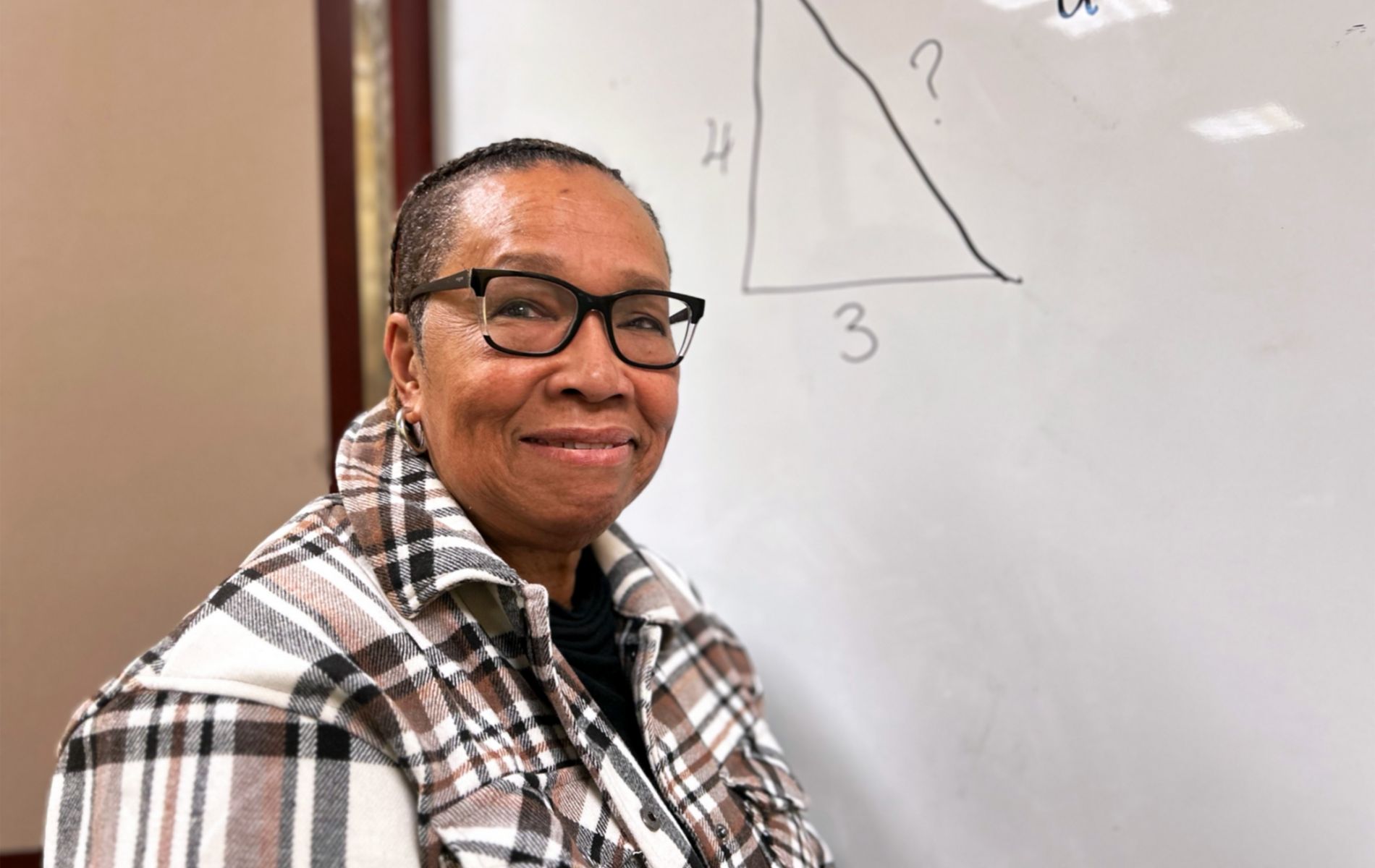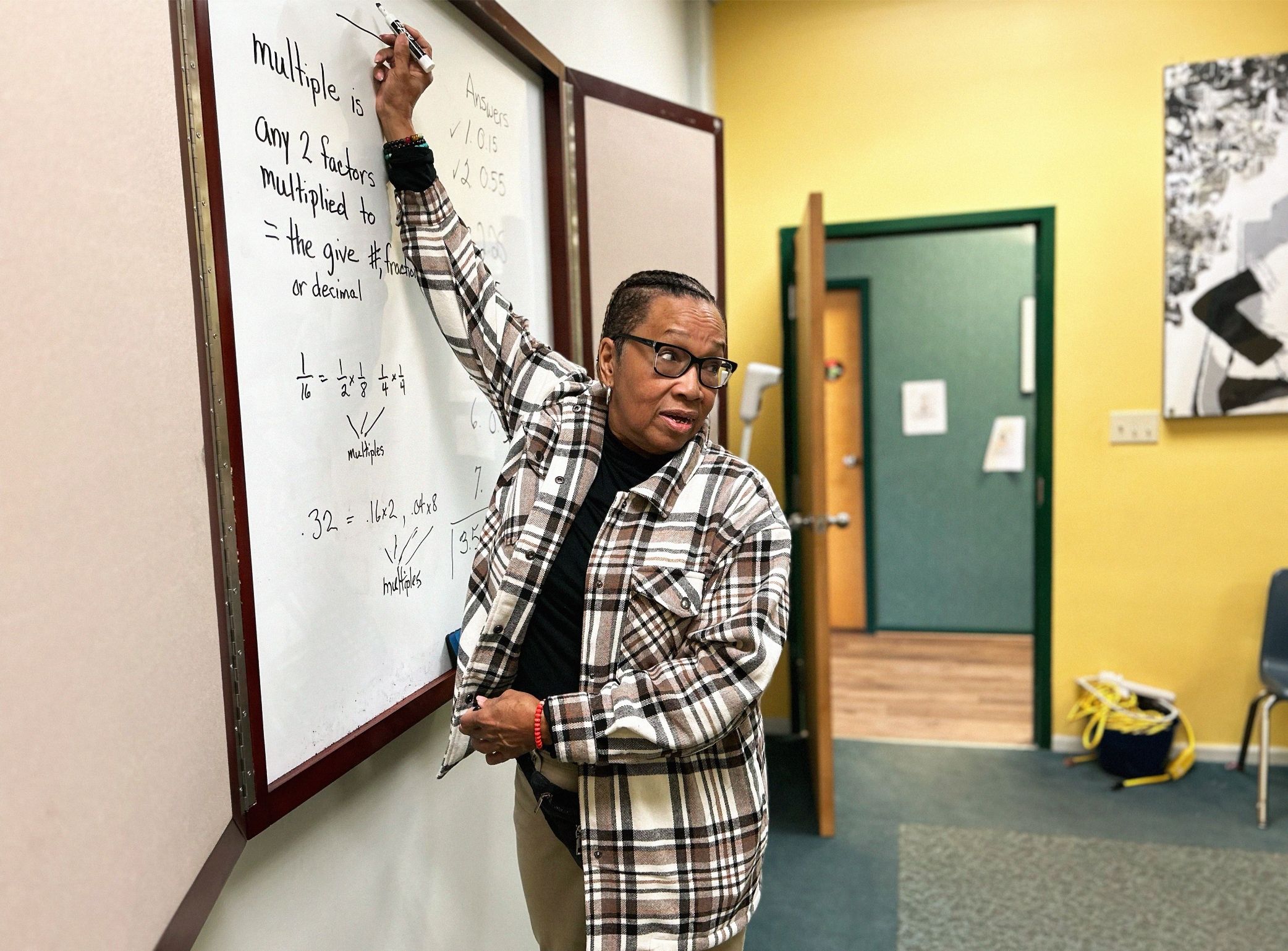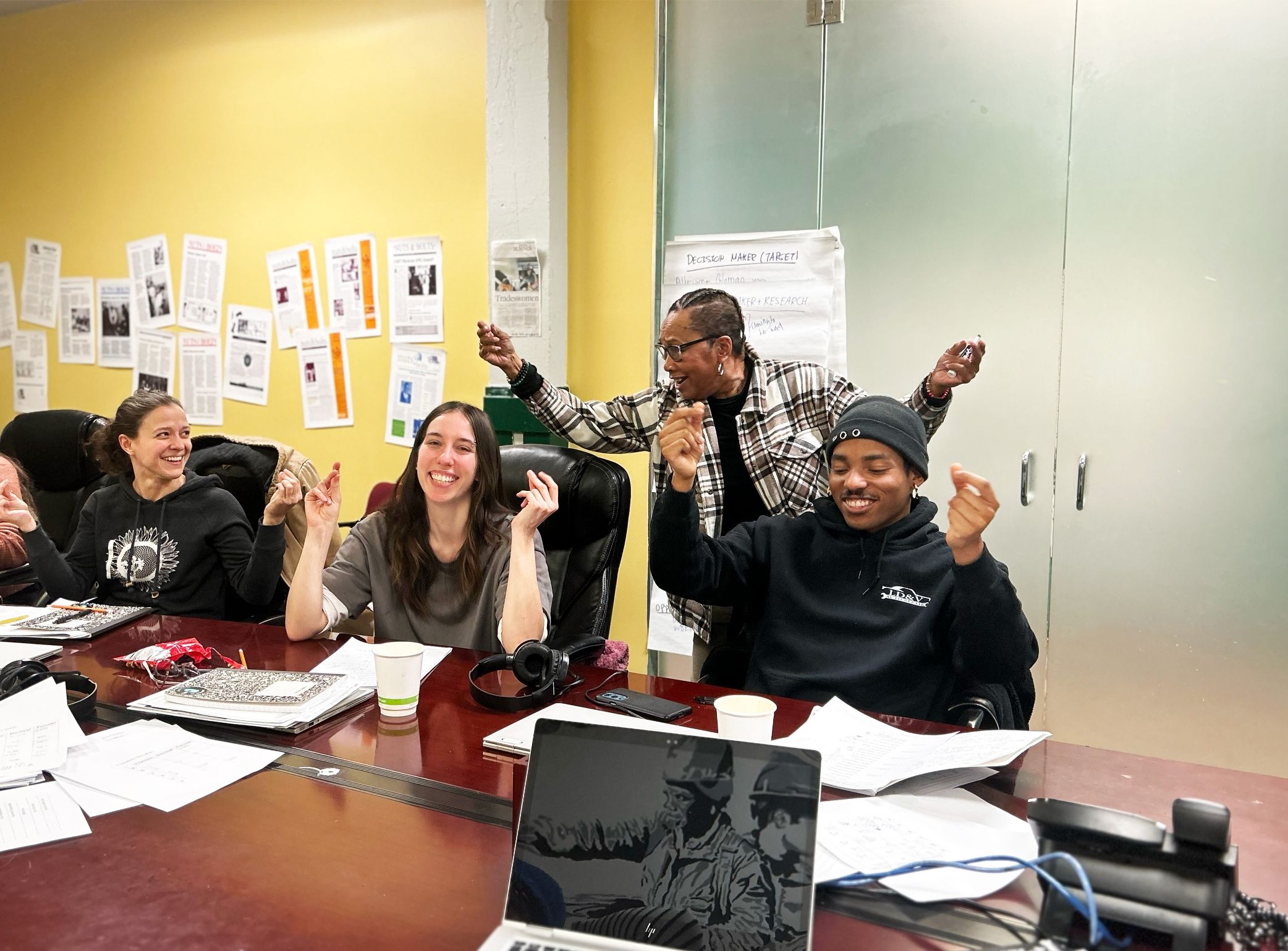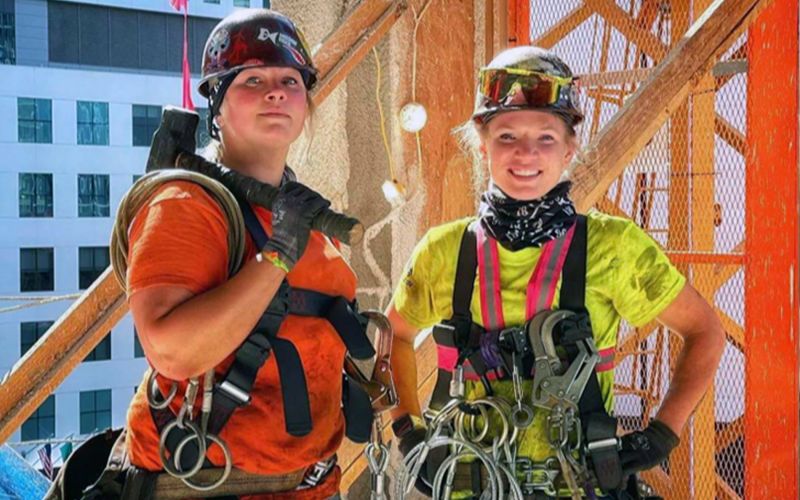February 14, 2025
Making Math Add Up: A Conversation With CWIT’s Instructional Coordinator Miss Kitty

Kathleen Thompson, better known to Chicago Women Trades (CWIT) staff and students as Miss Kitty, provides vital math instruction for students in CWIT’s training programs
After decades of teaching in Pittsburgh and Chicago public schools and a position as a coach for math teachers in a program at the University of Illinois, Chicago (UIC), Miss Kitty decided it was time for a change. Long pursued by Lauren Sugerman (one of CWIT’s co-founders) to join the CWIT team, Miss Kitty finally agreed. Her teaching philosophy is simple: collaboration and validation.
Q: How did you end up teaching math at Chicago Women in Trades?
“For years, Lauren kept asking me to teach here, and I always declined. I felt intimidated by the construction world. I kept saying, ‘You’ve got elevator operators, plumbers, carpenters – I don’t know anything about that.’ But Lauren would say, ‘You don’t have to know the trades; you just have to know the math.’ After COVID hit, I needed to step back from my other teaching work. When Lauren reached out again, I finally took it as a sign. Now when I see Lauren, I tell her, ‘You just never gave up on me, and here I am.’”
Q: What’s different about teaching math in a trades environment?
“The first real hurdle isn’t the math itself – it’s self-confidence. Many students come in carrying negative experiences from past math classes. The math isn’t that advanced – around fourth or fifth-grade level – but it directly applies to construction work. We do activities that aren’t just in the packet. For example, when teaching perimeter, I have them get their tape measures and work with real objects. In the welding class, we examine file cabinets and discuss how measurements might be off slightly and what that means for the work. It’s about making math meaningful and practical.”
Q: How do you help students overcome their fear of math?
“I start by holding up a pencil and asking why math teachers always require using one. It’s because of the eraser. You’ll make mistakes, and that’s where the real learning takes place. If you think you can come here and make no mistakes, you don’t need to be here. I’ll even make mistakes myself. My mentor Margie taught me about how people learn math – there’s a consistent trajectory whether you’re working with children or adults. She showed me that it’s not about memorizing rules or doing endless practice problems, it’s about understanding concepts and making connections.
We had one welding program graduate who struggled with basic multiplication. She was preparing for the ironworkers’ test – one of the most challenging, with over 200 pages of word problems! We worked together remotely over Zoom, and her determination was incredible. The night before her exam, we talked about shutting down that little evil twin in her head saying she couldn’t do it. Through her determination and perseverance, she passed. That was two years ago, and she’s still working as an ironworker today.”

Miss Kitty provides guidance on a math problem.

Students connect during Miss Kitty’s math class.

“When students discover new ways to solve problems, their pride and joy are contagious.”
Q: What’s your teaching philosophy?
“We’re all different learners. You might see something I didn’t see. When students discover new ways to solve problems, their pride and joy are contagious. Those ‘aha moments’ still get my adrenaline going. It’s about collaboration and validation – acknowledging every good idea. My friend Margie, still my thought partner today, taught me to focus on how students think about math, not just whether they get the right answer. She helped me understand that everyone has their own path to understanding.”
Q: What’s next for math instruction at CWIT?
“I’m working to bring more interactive technology into our preparation programs. There’s so much more we can do beyond paper packets – like animations for mechanical reasoning problems and interactive practice tests. I look to resources created by other pre-apprenticeship programs. The learning never stops – even for me. Looking back at how reluctant I was to take on this role, I’ve come full circle, and I couldn’t be happier about it.
Unions have asked CWIT how our students score so high on the math portions of apprenticeship tests. But I give all credit to the students. Sometimes, it’s about showing them test-taking tips – like recognizing that with decimal multiplication, if you know the rule, you can often spot the right answer without doing all the calculations. But mostly, it’s about building their confidence and helping them see that they can do this. Whenever I get a message saying ‘Miss Kitty, I passed!’ it makes it all worthwhile.”


